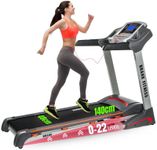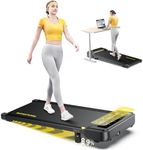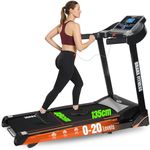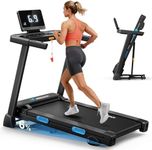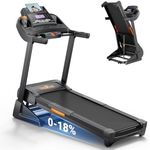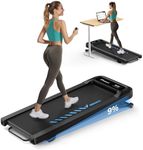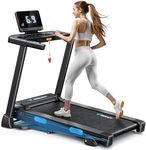Buying Guide for the Best Incline Treadmills
Choosing the right incline treadmill can significantly enhance your workout experience, whether you're aiming for weight loss, cardiovascular fitness, or muscle toning. Incline treadmills offer the added benefit of simulating uphill walking or running, which can increase the intensity of your workout and help you burn more calories. When selecting an incline treadmill, consider your fitness goals, available space, and the features that will best support your exercise routine.Incline RangeThe incline range of a treadmill refers to how steeply the treadmill can be adjusted to simulate uphill walking or running. This is important because a higher incline can increase the intensity of your workout, helping you burn more calories and engage different muscle groups. Incline ranges typically vary from 0% to 15% or more. If you're looking to challenge yourself and improve cardiovascular fitness, opt for a treadmill with a higher incline range. For beginners or those focusing on low-impact workouts, a moderate incline range may suffice.
Motor PowerMotor power, measured in horsepower (HP), determines how smoothly and efficiently the treadmill operates, especially at higher inclines and speeds. A stronger motor can handle more intense workouts and heavier users without straining. Motors typically range from 1.5 HP to 4.0 HP or more. If you plan to use the treadmill for running or at high inclines, consider a motor with at least 3.0 HP. For walking or light jogging, a motor with lower horsepower may be adequate.
Belt SizeThe belt size of a treadmill affects your comfort and safety during workouts. A longer and wider belt provides more space for running and walking, reducing the risk of stepping off the belt accidentally. Belt sizes typically range from 16 inches to 22 inches in width and 45 inches to 60 inches in length. If you're tall or plan to run, opt for a treadmill with a larger belt size. For walking or if space is limited, a smaller belt may be sufficient.
Cushioning SystemThe cushioning system of a treadmill refers to the shock absorption provided by the deck, which can reduce the impact on your joints during workouts. This is crucial for preventing injuries and ensuring comfort, especially during long sessions. Cushioning systems vary from basic to advanced, with some offering adjustable settings. If you have joint concerns or plan to use the treadmill frequently, look for a model with a good cushioning system. For occasional use, a basic cushioning system may be adequate.
Speed RangeThe speed range of a treadmill determines how fast you can walk or run on the machine. This is important for tailoring workouts to your fitness level and goals. Speed ranges typically vary from 0.5 mph to 12 mph or more. If you're a runner or want to perform high-intensity interval training, choose a treadmill with a higher speed range. For walking or light jogging, a lower speed range may be sufficient.
Console FeaturesConsole features on a treadmill include the display and controls for tracking your workout progress, such as speed, time, distance, and calories burned. Advanced consoles may offer additional features like heart rate monitoring, preset workout programs, and connectivity options. These features can enhance your workout experience and help you stay motivated. If you enjoy tracking your progress or need guidance during workouts, look for a treadmill with a comprehensive console. For basic use, a simple console may be adequate.



